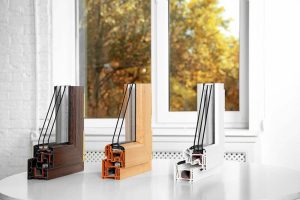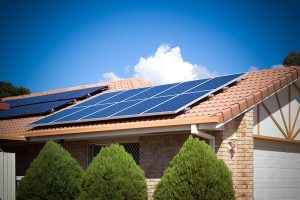Our Green, Smart, Sustainable Home Design & Construct Service
 Living in a comfortable home doesn’t have to cost the Earth.
Living in a comfortable home doesn’t have to cost the Earth.
In fact, at Australian Heritage Homes, we create green, smart, sustainable homes that save you money while offering you the comforts that you deserve.
The Australian Heritage Homes team has always prioritized minimizing your carbon footprint. Historically, all of our homes are well-built and offer measures automatically integrated into our designs.
Our Green, Smart, Sustainable Home Design & Construct Service takes this to another level.
Many believe that building green means sacrificing design or comfort. We’re here to dispel this myth. With Australian Heritage Homes, you’re still experiencing best-in-class design – with higher performance and cheaper running costs. Own your legacy as a homeowner, reducing operating costs and carbon footprint while driving increased comfort levels and ultimately increasing your home’s value.
When choosing our Green, Smart, Sustainable Home Design & Construct Service, you’re in charge. We work with you to establish your priorities and tailor the design and construction of your home, based on your preferences.
Let’s take a look at the measures that we focus on:
Passive Design Elements
Local Climate Responsive Design
- Throughout Melbourne there are different mini-climates. Each has its own weather patterns with factors including seasonality, wind direction, rainfall and humidity.
- Knowing these site-specific environmental conditions will help us to make informed design choices so that your home is energy efficient.
House Orientation
- We look at which way your property faces in order to determine which room makes sense where. We take into account the pathways of the sun, typical wind direction, existing and potential site obstructions, so that your heating and cooling costs are minimized.
- Understanding your preferences for a lighter or darker, cooler or warmer house will ensure we customise a home to you and your family’s needs.
Windows and Glazing

- Windows and glazing are a key element of your home’s design, connecting interior spaces with the outdoors. They offer light, ventilation, noise control and security.
- However, when improperly planned, windows and glazing can be weak points that account for more heat gain or loss than any other element your home.
- You can maximize the benefits of your windows and glazing by employing the following design principles:
- Select the correct glazing systems for your orientation
- Orientate larger openings to the north, and small openings to the south
- Locate window and door openings to allow natural cooling by cross ventilation
- Provide seals to openings to minimise unwanted draughts
External Shading
- Smart shading of your windows can reduce summer temperatures improving comfort and saving on cooling costs
- Shading devices include eaves, windows awnings, pergolas and even plantings
- Fixed shading must balance winter access against summer protection – dialled up or down, depending on the particular need of that part of your house
Thermal Mass

- Thermal mass is a term that describes how well a building material stores heat and can moderate the home
- Internal thermal mass is of the most benefit to any home
- A concrete slab and feature internal masonry walls are the most commonly utilised thermal regulators
- Poorly located external thermal mass can actual work against energy efficiency so this should be protected or located where it will least inhibit the home
Passive Heating and Cooling
- Passive heating and cooling cleverly utilises the pathway of the sun and breezes to heat and cool your home, saving the cost of mechanical systems
- Passive heating invites winter sun in, trapping it to be utilised, while keeping summer sun out and allowing any excess summer heat a way to escape
- Some examples of passive heating and cooling systems include glazing and overhangs designed to allow maximum winter sun penetration landing on internal thermal mass whilst excluding the harsh sun in summer
- We recommend:
- highlighting windows and door positioned to allow venting of heat in summer
- Choosing reflective colours where needed
- Spaces within your floorplan that can be separated from each in order to control their exposure to this heat and light
Insulation
- Insulation acts like a blanket – limiting the flow of heat from inside to outside
- Without proper insulation, up to two-thirds of a home’s heat energy can be lost
- Examples of insulation include bulk, reflective or composite and can be installed in the roof, walls, floors and the slab edge
- Insulation should be carefully incorporated on a needs’ basis
Draft proofing
- Up to 25 percent of winter heat loss from existing houses is caused by air leakage, also known as draughts or uncontrolled ventilation
- Our standard construction methods have proven to be well above other builder’s regularly scoring highly in pressure testing. This leakage reduction is paramount to the sustainable performance of any home.
Landscaping
- Clever positioning of the right type of vegetation can dramatically improve passive design
- Both the retention and introduction of native vegetation will encourage native wildlife to flourish and enhance your lifestyle
Australian Heritage Homes offers these passive design elements as part of our Green, Smart, Sustainable Home Design & Construct Service. These low-cost elements combined with our industry know-how will ensure a sustainable home for you. We aim for at least a 7-star energy rating as part of this process. A higher rating is easily achievable if our expert design consultants help elevate your design to higher levels.
Active Measures
You can choose any of the following measures to further elevate the sustainable performance of your home, reduce your energy bills and further reduce your carbon footprint.
Reduce, reuse, recycle

- We sort all debris on any job site:
- Steel: recycled or reused
- Timber: off-cuts reused or recycled
- Cardboard and paper: recycled
- Concrete, Brick, Tile: recycled
- Excavated soil & rock: reused on site for landscaping
- All timber: plantation grown or recycled
- Waste water: retaining and disposed of
We source locally
- Our company sources materials from local suppliers where possible
- Steel: recycled or re-used
- Recycled bricks (if selected by our customers)
Low-allergy building
Low-allergy building techniques can be incorporated into any build where this is a priority to our clients. This means:
- Low VOC painting system to all internal walls, ceiling & trims
- Low allergy floor finishes
- Gentle heating and cooling systems
- Low toxicity adhesives
Add-On Measures
Active add-on measures such as power generation, water harvesting and solar-boosted water heating can complement a sustainably designed home. They significantly reduce your home’s energy consumption. When incorporated wisely, they pay for themselves quickly before turning a profit for the rest of their lifecycle. You can choose any of the following measures. Our expertise and buying power will ensure these will be incorporated in the most effective way.
Heating and Cooling
- Our Green, Smart, Sustainable Homes should not need much heating or cooling
- Cooling systems can run on solar power in order to provide heating and cooling
- Some examples of active heating and cooling systems include
- Hydronic in-slab heating system
- Solar boosted hot water
- Reversible ceiling fans in living areas and bedrooms
- 5-star, zoned natural gas ducted heating
Solar power

- Installing a solar PV system will allow you to generate renewable energy and massively reduce your electricity bills. While we’re happy to help, it’s important to note that The Victorian Government is providing a rebate for eligible households, so this is often best sourced by the home owner.
- Strategies on placement and incorporation of PV systems should be designed hand-in-hand with other important decisions, in order to create an interactive holistic green smart home environment
- Solar boosted hot water can dramatically reduce energy bills; this may sometimes double up as the house heating system.
Incorporated power saving measures
- Low Energy lighting is incorporated on all our Green, Smart, Sustainable Projects
- We can incorporate a “kill switch system” located near the exit door, shutting off power to nominated circuits in order to reduce the unnecessary drain from non-essential appliances when the house is not occupied.
- We can incorporate 5 or 6-star rated appliances into the build which can be selected by you from our range of various green suppliers and manufacturers.
Water saving measures
- We include a water tank servicing the garden and supplying all toilets for flushing. The size of this tank can be dramatically increased if this is a priority of yours
- Water saving taps and fixtures can be chosen and incorporated into the build
- A well-designed water saving garden can be incorporated and fun to design
With Australian Heritage Homes, you choose which of the above you’d like to invest in – not only to make your home comfortable and marketable, but to give back to the environment. We offer competitive rates without the expensive bells and whistles often seen in the industry.
A fully Green, Smart, Sustainable Home should incorporate all the passive measures possible but not at the expense of other priorities like aesthetics, your view or your budget. The active “add on” measures should be carefully selected depending on your vision. With energy bills rising, the benefits of being energy efficient over the entire life of a home are immeasurable, but your comfort and happiness come first. We look at your savings as ‘financial icing on the cake’.
Interested in making changes at your current or future property?
Reach out to our team and ask us how we can help turn your home into one that you, your wallet, and your carbon footprint will be proud of.